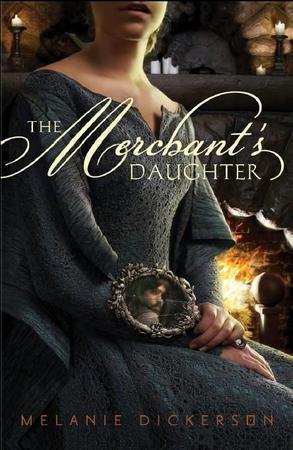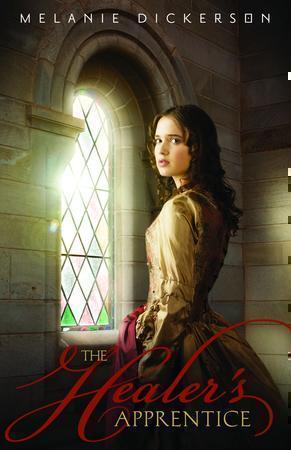 “Fairy tales are fairly outlandish, unbelievable tales, and yet they’re intriguing and fun,” says Melanie Dickerson. That’s why she writes them — with a twist.
“Fairy tales are fairly outlandish, unbelievable tales, and yet they’re intriguing and fun,” says Melanie Dickerson. That’s why she writes them — with a twist.
“I just thought it would be fun to take the basic story and make it realistic, to ask the question, ‘What if this really happened? What would the story be like?’” Melanie told Cracking the Cover. “There are some over-the-top characters in fairy tales, and yet we all know someone who reminds us of the evil stepmother, or the slighted princess, and we all feel like Cinderella at some point in our lives.”
Melanie is a Christian writer with two young adult books under her belt. “The Healer’s Apprentice,” which is loosely based on “Sleeping Beauty,” was published in October 2010 and was a Christy Award finalist in the young adult category. Her second novel, “The Merchant’s Daughter” hit shelves a few weeks ago.
Using “Beauty and the Beast” as a jumping off point, Melanie crafted her latest tale over a year and a half period. Set in medieval England, the book follows Annabel, once the daughter of a wealthy merchant, as she is forced in indentured servitude to Lord Ranulf, a recluse who is rumored to be both terrifying and beastly. Upon arriving at Lord Ranulf’s manor, however, Annabel discovers a peace she thought she could only fin upon entering a nunnery. But that precarious peace is shattered when a man is found injured on Lord Ranulf ‘s land. Annabel knows the attacker and wants to protect them, but at what cost?
The idea for “The Merchant’s Daughter” came to Melanie just after she finished writing “The Healer’s Apprentice.” She thought it would be fun to write a whole series of medieval romances based on the fairy tales. And since “Beauty and the Beast” was her favorite fairy tale, it was a natural choice. “The story gradually came to me,” she said. “And I thought of it as kind of a gothic story, set in the misty countryside of England.”
 However, the steps between having an idea about a story set in medieval England and bringing it to fruition can be somewhat daunting. Just the vast amount of available information on the time made research a little challenging, Melanie said. And a lot of it is either completely or partially wrong.
However, the steps between having an idea about a story set in medieval England and bringing it to fruition can be somewhat daunting. Just the vast amount of available information on the time made research a little challenging, Melanie said. And a lot of it is either completely or partially wrong.
“There’s a lot of information to wade through,” she said. “And I had to find out all about the judicial system in place at the time. That was a bit tedious.”
Melanie also had to focus on the intensity that developed throughout the story, which made it an emotional tale to write. But it all paid off, she said as she was writing the gradual falling in love of the Annabel and Lord Ranulf.
Also important to the book — incorporating Christian elements. Christian themes are key to Melanie’s writing, and while one might think it’s difficult to incorporate them into fairy tales, Melanie says the Christian themes happen naturally. “They evolve according to the characters’ personalities and the premise of the story,” she said. “The 14th century creates its own Christian themes because of the fact that most people had never seen a Bible and couldn’t read one if they had it. This factors greatly into my story.”
Melanie plans to continue her Christian fairy tale streak, having recently finished a Snow White story and beginning one about Cinderella.
“I feel privileged to speak into the lives of young adults in my own small way, giving them clean, exciting books to read,” she said. “These are the type of books I would have loved as a teen — as an adult too!”
**Melanie took a lot of time and care to answer Cracking the Cover’s questions. Read a complete transcript of her interview.
